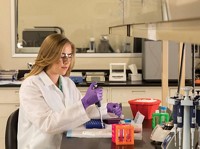Advertisement
Grab your lab coat. Let's get started
Welcome!
Welcome!
Create an account below to get 6 C&EN articles per month, receive newsletters and more - all free.
It seems this is your first time logging in online. Please enter the following information to continue.
As an ACS member you automatically get access to this site. All we need is few more details to create your reading experience.
Not you? Sign in with a different account.
Not you? Sign in with a different account.
ERROR 1
ERROR 1
ERROR 2
ERROR 2
ERROR 2
ERROR 2
ERROR 2
Password and Confirm password must match.
If you have an ACS member number, please enter it here so we can link this account to your membership. (optional)
ERROR 2
ACS values your privacy. By submitting your information, you are gaining access to C&EN and subscribing to our weekly newsletter. We use the information you provide to make your reading experience better, and we will never sell your data to third party members.
Business
Agilent Technologies invests in sequencing firm Lasergen
by Ann M. Thayer
March 10, 2016
| A version of this story appeared in
Volume 94, Issue 11

Agilent Technologies is putting its muscle behind the next-generation sequencing (NGS) technology firm Lasergen. The instrumentation giant is investing $80 million in the hopes that Lasergen’s sequencing chemistry will yield Agilent its first NGS system.
For its money, Agilent gets a 48% stake in Houston-based Lasergen and the option to acquire the rest for $105 million within two years.
“An NGS platform would enhance Agilent’s competitive positioning, given the company’s existing expertise in complementary areas of the workflow,” including sample prep, arrays, and automation, Goldman Sachs stock analyst Isaac Ro said in a recent report to clients.
Lasergen has been trying to commercialize technology that emerged from Rice University and Baylor College of Medicine around 2002. The 20-person company talked publicly about building a prototype system in 2011 but has been quiet for the past four years.
Agilent is betting on Lasergen’s chemistry translating into faster, cheaper, and more accurate sequencing than existing methods. Although NGS competitors such as Illumina and Pacific Biosciences use similar cleavable labels to image gene sequences, Lasergen claims that its photocleavable terminators offer more robust properties and faster reaction kinetics.
And rather than pursue the high-end research market, Agilent intends to target clinical NGS applications with an integrated system and workflow for routine analysis.
Although Ro has his doubts about how well Lasergen’s technology will ultimately compete against others, the new partners are confident that they can develop a system within three to four years and that it will find a place in a clinical market they predict will be worth at least $2 billion annually.



Join the conversation
Contact the reporter
Submit a Letter to the Editor for publication
Engage with us on Twitter